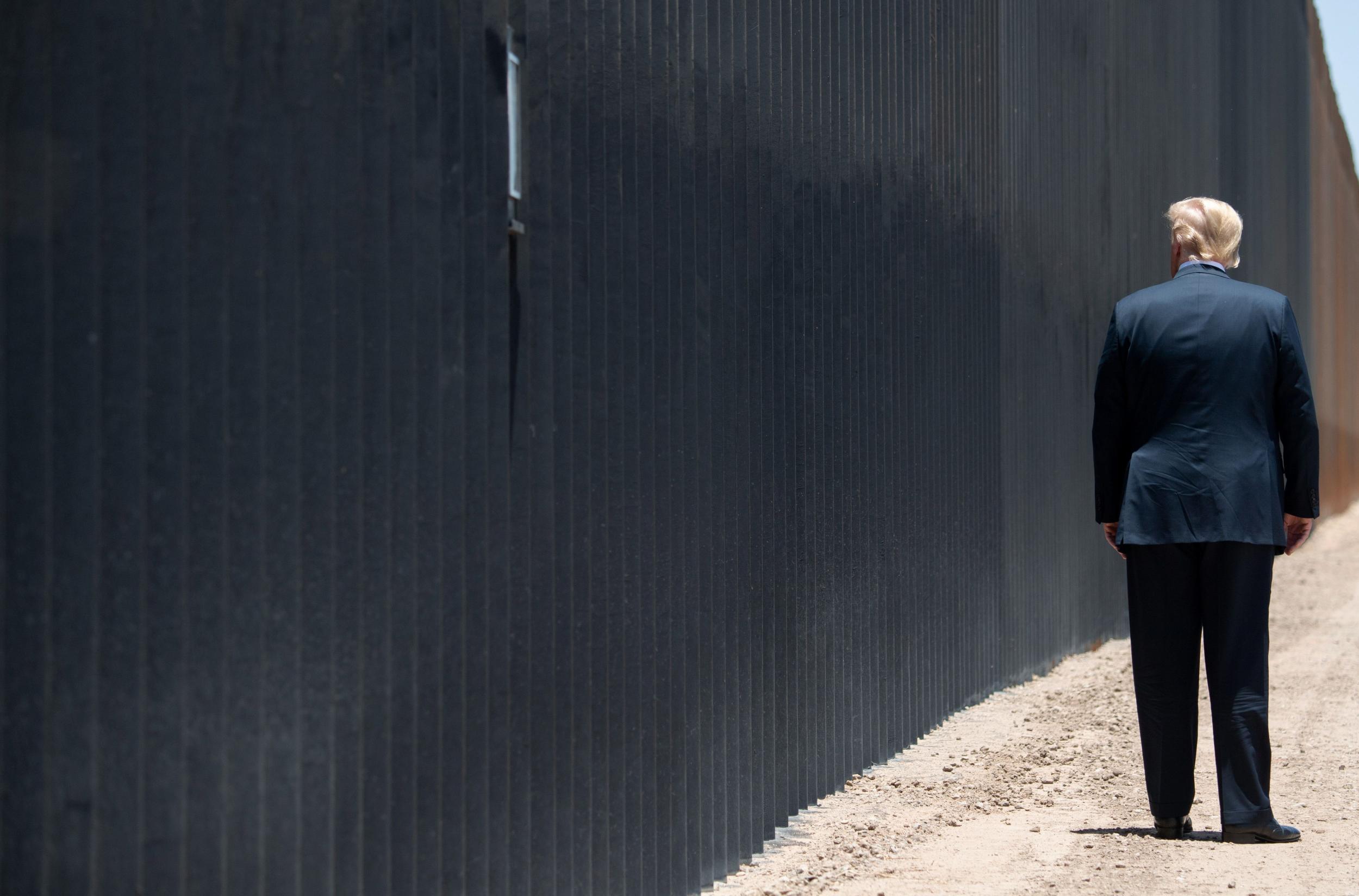The real reason Donald Trump is visiting an Arizona church
If the president is campaigning in the US southwest, writes Andrew Buncombe, he must think the formerly red state is going to be very close in November


There are few things that get Donald Trump and his supporters more excited than the wall along the US’s border with Mexico.
Whether it is the fences that have so far been erected under his presidency – around 350km, with the vast majority of them replacing existing structures – those he has promised (more than 800km by early next year), or the more general notion of a barrier against “others”, the president knows he has a ready-fire applause line whenever he mentions it at one of his rallies. He used to brag Mexico would pay for the wall, but recently he’s stopped saying that, apparently in light of Mexico having repeatedly refused to do so.
Little surprise then, about the glee that could be sensed in the president’s voice as he set off to Arizona, first to visit the border at Yuma, then the Dream City Church in Phoenix, where the pastor claimed to have installed an air purification system that would kill “99.9 per cent of Covid-19 within 10 minutes”.
“So we’re going to Arizona. We’re celebrating. We have over 200 miles of wall built. It’s been incredible,” said Trump, who campaigned on a pledge to build a wall across the entirety of the 1,954-mile border, as he left the White House on Tuesday morning.
“Our numbers on the border, as you know, are at just about a record-breaking low. People are not being able to cross the border.”
Yet there was one thing Trump did not mention as he left DC – the surge in support in Arizona for his rival, Joe Biden. Polls show the 77-year-old Democrat with a lead of up to 4 points in a state Trump, 74, narrowly won in 2016.
Indeed, reports suggest there is a confidence among the Biden campaign that the presumptive nominee could deliver the Democratic Party’s first victory there since Bill Clinton narrowly won it in 1996, helped by the third-party candidacy of Ross Perot. (Barack Obama lost the state by more than 10 points both times he contested it.)
The campaign of the former vice president, who currently leads Trump in national polls by anywhere up to a dozen points, has long made clear its intention to place Arizona among the top of the states it is looking to flip this year. Changing demographics, and a younger, more heavily Latino electorate that now account for up to 25 per cent of voters, have turned a once solidly red state a vibrant shade of purple. The well-regarded, non-partisan Cook Political Report currently judges it to be a “toss-up”.
“We believe there will be battleground states that have never been battleground states before – Arizona on the top of the list,” Biden’s campaign manager Jen O’Malley Dillon, told the media earlier this year.
“I am bullish about Arizona. It is a state where we are not only ahead, but we have a strong opportunity to build our unique pathway to victory.”
Biden defeated Bernie Sanders by more than 12 points in the Democrats’s primary there in March. Yet, while Arizona is among the states Biden could lose and still win enough others to make it to the White House, Trump’s already narrow path to re-election demands that he holds onto such states such as Arizona, and the most important prize – Florida.
Trump’s political strategy has long been to energise his base and demonise his opponent; he long ago abandoned whatever notion of seeking to expand his coalition of supporters. And if he feels on the defensive, it might explain his decision to hold a weekend rally in Tulsa, even though the last Democrat to win Oklahoma and seven electoral college votes was Lyndon Johnson in 1964.
As it was, the rally was widely derided, both for its poor attendance, and because those Trump supporters who did attend, failed to follow social distancing measures or wear masks, even though coronavirus infections in the state soared ahead of the rally, and eight members of the president’s campaign subsequently tested positive.
“Trump is campaigning like someone who’s behind,” says Michael Fraioli, a DC-based Democratic strategist. “If he is campaigning in Arizona, it also sends out a message about how he is doing in other states.”
Fraioli says while Trump’s posing for pictures on the border will appeal to his base, it will be of less interest to people such as Martha McSally, a Republican who was appointed to one of the Arizona senate seats last year, after a spot became vacant following the 2018 death of John McCain.
She is facing a strong challenge from Democrat Mark Kelly, a former astronaut and the husband of one-time congresswoman Gabby Giffords, who was shot and severely injured almost a decade ago during an attack in the city of Tucson. An average of polls collated by RealClearPolitics gives Kelly a lead over McSally of almost 10 points.
Arizona is also among those states seeing a spike in cases, as authorities seek to end lockdowns and kickstart the economy.
This was something seized on by Biden when he criticised Trump for making the visit.
“Instead of doing the hard work needed to solve the public health and economic crises facing America, Donald Trump remains focused on his expensive, ineffective and wasteful ‘wall’ on our southern border,” Biden said in a statement.
He said the president’s events were “reckless and irresponsible”. “Make no mistake,” he added. “This visit is a distraction.”
Join our commenting forum
Join thought-provoking conversations, follow other Independent readers and see their replies
Comments